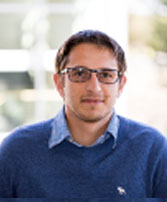
Shed light on the mystery of dark matter
The origin of dark matter is one of the most puzzling mystery in Physics. Different strategies are being used to detect these elusive particles. The search for a signature of particles produced from dark matter interactions is one of the most promising strategy. Indeed, there is a rich and precise dataset currently available for cosmic rays and radiation that covers many orders of magnitude. Cosmic particles are predominantly produced by astrophysical sources such as pulsar wind nebulae, supernova remnants or active galactic nuclei and by the secondary mechanism (spallation reactions of cosmic rays with the Galactic environment). My research project focuses on the interpretation of the data of cosmic positrons, electrons, antiprotons, rays, neutrinos and anti-nuclei, which are among the rarest messengers in the Universe and thus the most promising to detect a dark matter signal. I will first improve the precision of our theoretical models for the astrophysical flux of cosmic rays and radiation in order to increase our sensitivity to search for dark matter. This will be achieved by using the newest cosmic-particle flux data to refine the theoretical models for the particle acceleration from astrophysical sources and propagation in the Galaxy. Then, I will employ accelerator data (mainly from LHC experiments) to calculate new models for the spallation reaction cross sections. This first part will provide the most precise estimation ever for the contribution of astrophysical sources to cosmic-ray and radiation flux data. I will take advantage from this result to search for a DM contribution with generic dark matter models and specific Beyond Standard Model theories. I plan to publicly release my results for the DM search in a format that can be used by other scientists. Therefore, this work represents a service for the scientific community.

Mattia Di Mauro - INFN TORINO
Dr. Mattia Di Mauro is currently a researcher at INFN Torino Unit.
He obtained his PhD in Physics and Astrophysics with a joint program between the University of Grenoble and Turin.
He has been a Postdoc at Stanford University and an Assistant Research Scientist at NASA Goddard Space Flight center and CUA.
His research interests widely cover Astroparticle Physics from the modeling of cosmic-ray emission from Galactic and Extragalactic sources, propagation of cosmic rays and indirect search of dark matter. He is a member of the Fermi-LAT Collaboration for which he served as coordinator of two science groups.
Back to Category
